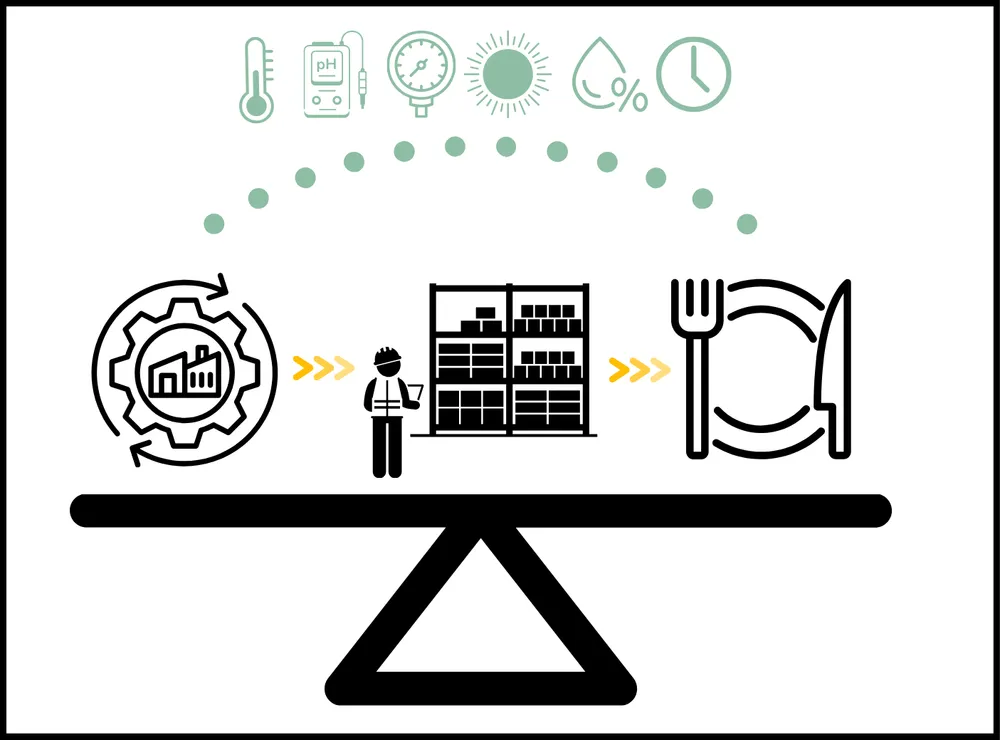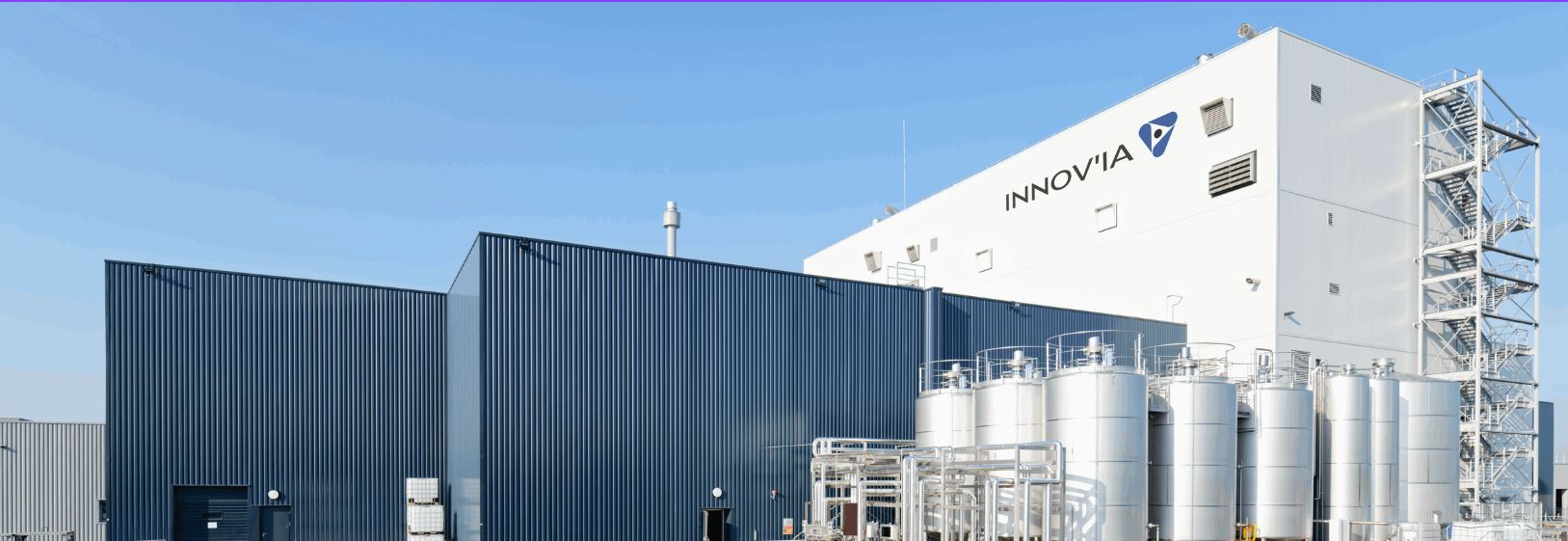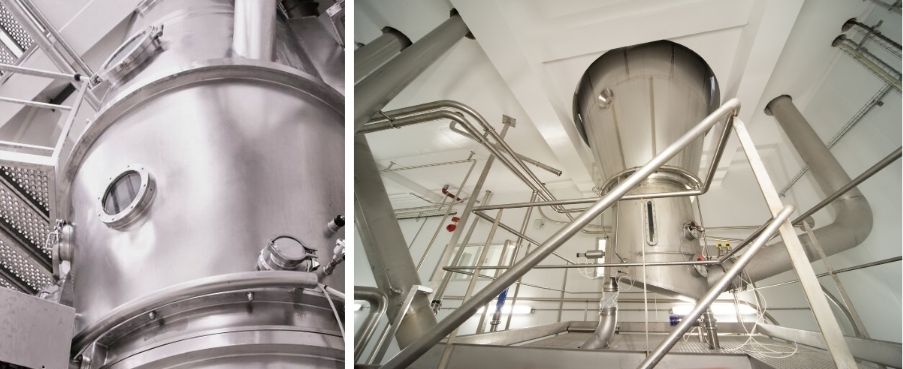Formulating a product also means ensuring that each ingredient remains stable, active, and functional all the way through. High temperatures, humidity, and logistical constraints pose numerous challenges to maintaining the quality of sensitive active compounds.
That’s precisely the role of stabilization. Through technological processes such as microencapsulation, coating, or drying, it protects ingredients, controls their release, extends their shelf life, and ensures consistency in the final product.
At Innov’ia, we support food industry professionals in implementing tailor-made stabilization solutions adapted to their industrial and regulatory constraints.
In this article, discover the challenges of stabilization, the available technologies, and the tangible results you can expect.

Ingredient Stabilization: What Are We Really Talking About?
Stabilization refers to the range of technological processes used to preserve the functionality, integrity, and effectiveness of an ingredient throughout its lifecycle — from processing to consumption.
Concretely, it involves protecting sensitive actives — vitamins, enzymes, probiotics, plant extracts, flavors — from the effects of time, heat, humidity, oxygen, or pH. The goal is simple: to ensure that the ingredient fully performs its function without any loss of efficacy.
Stabilization does not rely on adding ingredients, but rather on controlled physical processes such as:
- Microencapsulation, to isolate and release an active at a targeted moment;
- Coating, to create a protective barrier around a compound;
- Spray drying (also known as atomization), to convert a liquid ingredient into a stable powder;
- Or agglomeration, to improve the structure and solubility of powders.
Applied early in the formulation process, stabilization paves the way for more robust, stable, and high-performing products, while also meeting sustainability, logistics, and regulatory requirements.
Why Stabilize an Ingredient?
In a context where product performance is inseparable from its stability, mastering stabilization becomes a strategic priority for R&D, quality, production, and logistics teams. Here are the main objectives that effective stabilization helps achieve:
Protect Sensitive Actives
Some ingredients — vitamins, enzymes, probiotics, plant extracts, or unsaturated lipids — are especially vulnerable to heat, oxygen, or humidity. Without protection, their functional properties can be compromised as early as the first processing steps. Stabilization preserves their efficacy from production through to consumption.
Extend the Shelf Life of Formulations
A stabilized ingredient is more resistant to temperature variations, humidity, and the constraints of transport or storage. The result: a longer shelf life, reduced logistical losses, and better alignment between the product’s promise and its actual performance at the use-by date.

Ensure Consistency of the Final Product
Stabilization plays a key role in controlling texture, miscibility, or solubility. It helps prevent issues such as clumping, sedimentation, or phase separation — ensuring a homogeneous product experience that meets consumer expectations.
Control the Release of Compounds
In certain applications — dietary supplements, functional nutrition, animal feed — it’s crucial that the ingredient is released at a specific moment (e.g., after gastric passage). Stabilization allows the release kinetics to be adjusted according to functional or physiological objectives.
In summary, stabilization secures the performance of your formulations, optimizes your industrial processes, and accelerates the development of high-value-added, innovative products.
Stabilization Technologies Mastered by Innov’ia
At Innov’ia, stabilization is based on a multi-technology approach designed to adapt to each ingredient, each matrix, and each functional objective. Here are the main solutions we implement:
This technique isolates an active within a protective matrix. The goal: to shield it from external stressors (oxidation, heat, etc.) and control its release. It’s ideal for sensitive probiotics, vitamins, or flavors.
(Also known as atomization)
This rapid process transforms a liquid into a stable powder. It allows for the fixation of heat-sensitive actives while ensuring good preservation and easy handling.
This method produces homogeneous, stable, and easy-to-disperse powders, minimizing clumping or segregation phenomena.
Low-Temperature Drying
This gentle technology minimizes the degradation of the most heat-sensitive actives, such as probiotics, essential oils, or enzymes. It ensures better preservation of functional properties while maintaining the effectiveness of ingredients in the final product.
Each technology is selected or combined based on your specifications to ensure optimal stability, while respecting industrial, regulatory, and sensory constraints.
Tangible Results for the Industry
Ingredient stabilization goes beyond simply protecting an active: it has a cross-cutting impact on product quality, robustness, and performance. Here are the most commonly observed benefits in formulation projects supported by Innov’ia:
Enhance the Functional Effectiveness of Actives
A fragile ingredient can lose its properties before even being consumed. Thanks to stabilization, it is possible to preserve the activity of sensitive compounds — vitamins, enzymes, probiotics, plant extracts, etc. — throughout the entire process.
👉 Example: protecting a heat-sensitive vitamin in a nutritional powder designed for hot reconstitution.
Optimize Product Shelf Life and Robustness
Stabilization helps extend the physico-chemical stability of an ingredient within its matrix, even under challenging conditions (transport, humidity, extended storage).
👉 Example: improving the preservation of a natural flavor in a dry preparation intended for export.
Secure Formulation and Reproducibility
A better-stabilized ingredient is easier to formulate and reproduce in production, with less batch-to-batch variability. This reduces technical adjustments and facilitates industrial transfer.
👉 Example: ensuring that an active remains stable in a liquid preparation throughout its shelf life.
Improve Perceived Quality and Product Consistency
Stabilization ensures homogeneous textures, controlled solubility, and gradual release of actives — all of which enhance the sensory quality of the final product.
👉 Example: preventing sedimentation of a micronized ingredient in a fortified beverage.
Reduce Losses Across the Supply Chain
More stable products better withstand the challenges of transport and storage. This reduces losses, complaints, and waste due to premature ingredient degradation.
👉 Example: limiting losses due to clumping of a functional powder in a humid climate.
Each project carried out with Innov’ia is based on an in-depth technical study and a customized solution. The goal is always the same: to turn your constraints into performance drivers.
Why Work with Innov’ia to Stabilize Your Ingredients?
At Innov’ia, stabilization is not a one-size-fits-all solution. It’s a custom engineering process, carried out in close collaboration with your teams to meet specific needs — with concrete results.
Tailor-Made R&D Support
From concept to finished product, our R&D experts support you at every stage: feasibility, prototyping, formulation optimization, and industrialization. Each solution is designed to fit perfectly within your technical and regulatory constraints.
Multi-Technology Expertise
Innov’ia combines several stabilization technologies within its industrial sites. This ability to interconnect processes allows us to identify the best technical combination for each ingredient and each matrix.
Our facilities are certified (ISO 22000, FSSC 22000, etc.), and our processes are optimized to reduce environmental impact: energy savings, reduced material losses, and valorization of co-products.
Industrial Capacity Adapted to Your Volumes
From pilot runs to full-scale production, we offer flexible production lines that ensure batch reproducibility and safety.
With Innov’ia, you gain a partner who is expert, agile, and committed — ready to help you transform your formulations into reliable, distinctive products.
Conclusion — Stabilization: A Driver of Product Performance
Ingredient stabilization is much more than a technical process — it’s a catalyst for innovation, a lever for differentiation, and a key asset for industrial performance.
By protecting sensitive actives, extending their efficacy, and controlling their release, stabilization enables the formulation of products that are more robust, more stable, better tolerated, and aligned with the expectations of a demanding market.
At Innov’ia, we put our technological expertise and adaptability at the service of your projects, turning your ideas into concrete, reliable, and sustainable solutions.
Are you developing a sensitive or complex product?
Looking to enhance the stability of your current formulations?
Our teams are ready to work with you to build a tailor-made solution.
Contact-us
"*" indicates required fields



